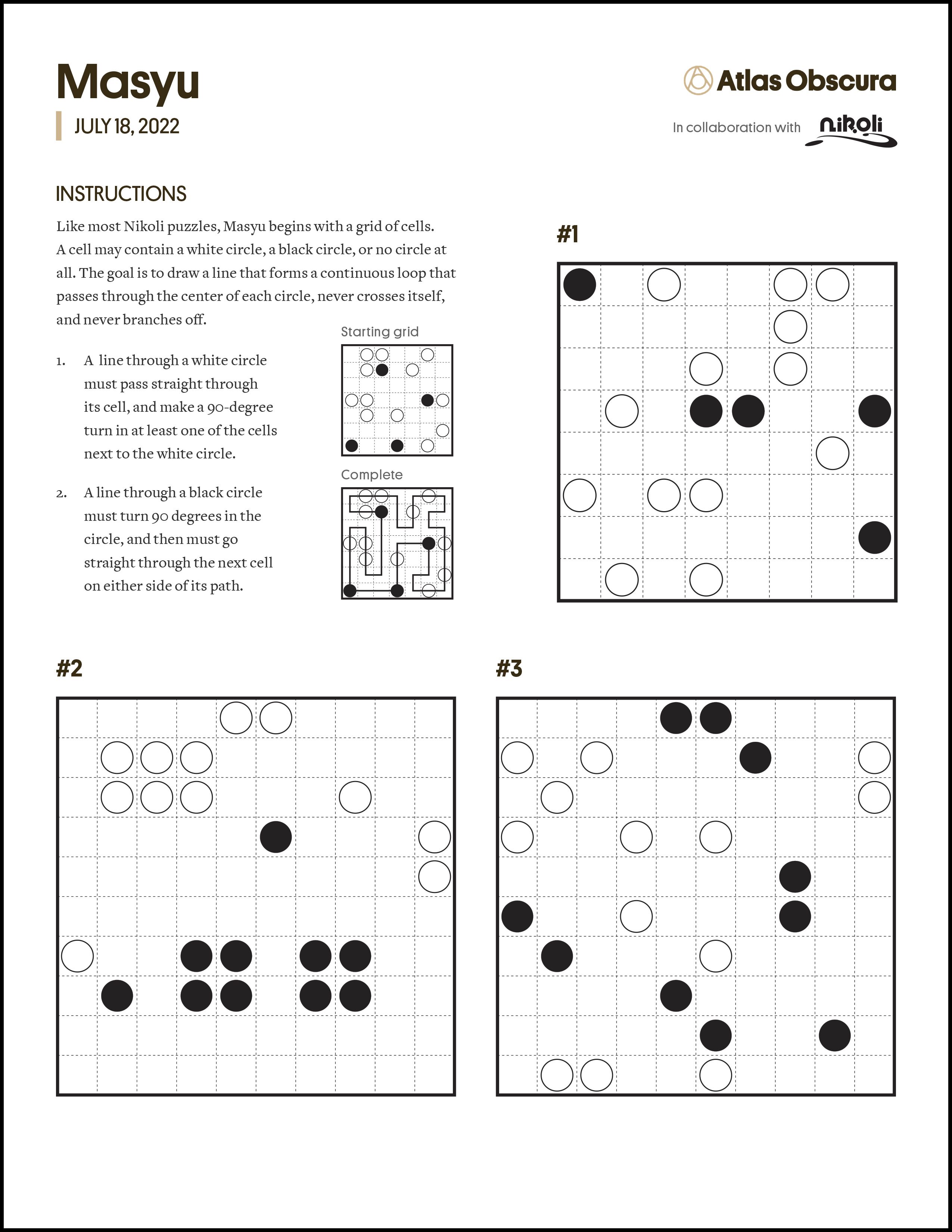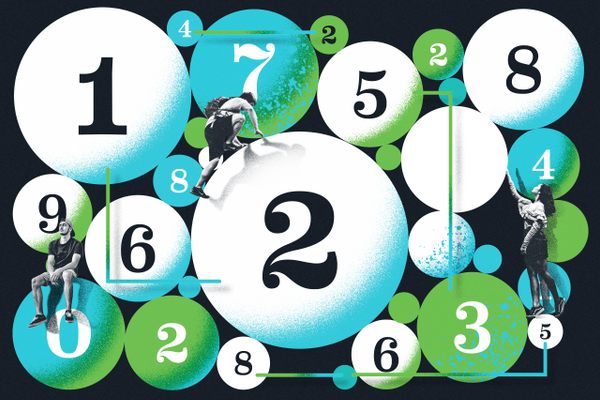
Puzzle Monday: A Pearl Necklace Both Elegant and a Little Evil
Among our crosswords and other puzzles, we’ll be featuring logic challenges from Puzzle Communication Nikoli, a cult-favorite puzzle publication from Japan. A PDF of the puzzle, as well as the solution, can be downloaded below.
The puzzle known as Masyu is today one of the most popular and recognizable in the pages of Japan’s Puzzle Communication Nikoli, the most influential puzzle publication in history. But it started life as another puzzle entirely.
Nikoli is known not just for making Sudoku a household name, but because many of its puzzles are invented by fans and readers. In 1999, a creator named Ryou Yano conceived a grid-based puzzle involving connecting a series of white circles with a continuous loop. It was called, appropriately, Shinju-no-Kubikazari—Pearl Necklace.

“I cleared my mind to the state of emptiness,” Yano says. “Then I moved my pencil around randomly and came up with this puzzle.” There’s a little Zen in it, but also a common Nikoli puzzle mechanic—drawing a continuous, unique loop around a grid based on a set of deceptively simple rules.
Readers enjoyed Shinju-no-Kubikazari, and submitted their own, hand-crafted examples, but solving these puzzles was rather simple and repetitive, according to Nikoli president and puzzle editor Yoshinao Anpuku.
This happens often with newly invented puzzles, Anpuku says, and a common response is for other creators to add new symbols or rules to existing puzzles to make them more entertaining. It’s part of the collaborative Japanese puzzle development process, he says.
In this case, another creator named Acetonitrile experimented with a number of ideas to build off of Shinju-no-Kubikazari. If there are white pearls, what about black ones that abided by a different set of rules? A new puzzle, with two authors, was born.
At first it was called Shiro-Shinju Kuro-Shinju (White Pearl Black Pearl). One day, former Nikoli CEO and “Godfather of Sudoku” Maki Kaji misread the characters of the title as “Shiro-Masyu Kuro-Masyu.” Other editors heard about this and it became an office inside joke—Masyu means “evil influence.” The name stuck.
Like most Nikoli puzzles, Masyu begins with a grid of cells. A cell may contain a white circle, a black circle, or no circle at all. The goal is to draw a line that forms a continuous loop that passes through the center of each circle, never crosses itself, and never branches off.

- A line through a white circle must pass straight through its cell, and make a 90-degree turn in at least one of the cells next to the white circle.
- A line through a black circle must turn 90 degrees in the circle, and then must go straight through the next cell on either side of its path.
In the downloadable PDF below, you’ll find the instructions above, an example, and three puzzles of increasing difficulty.

Stumped? Download the solutions!









Follow us on Twitter to get the latest on the world's hidden wonders.
Like us on Facebook to get the latest on the world's hidden wonders.
Follow us on Twitter Like us on Facebook